Functional Principle of SchlammFIT®
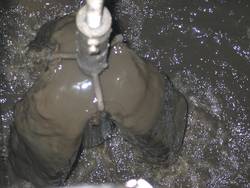
- sewage sludge
During the clarification of wastewater sewage sludge is formed due to the nature of the system.
At many wastewater treatment plants the liquid sludge with a water content of about 95-98% is stored until its utilization.
In order to reduce the amount of water and to raise the solid content we have developed the SchlammFIT® system.
With only 1,5 – 2 kWh electrical power per m³ sewage sludge we can reduce the volume of the sewage sludge by up to 96 %.
Preparation
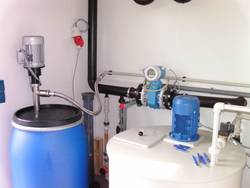
- sewage sludge conditioning
First, the sewage sludge is pumped from the sludge storage to the drying hall.
At the same time it is mixed with conditioning agents in order to enlarge the flakes of sewage sludge.
Loading the SchlammFIT® gutter
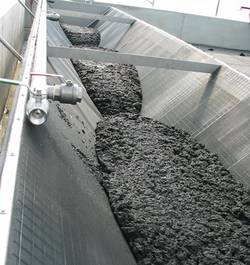
- loading the SchlammFIT® gutter
The prepared sludge is pumped directly into the SchlammFIT® gutter.
This gutter is installed along the whole hall width.
A net holds back the sewage sludge and the water drains off through the net.
The water flows back into the afflux of the wastewater treatment plant.
Unloading the SchlammFIT® gutter
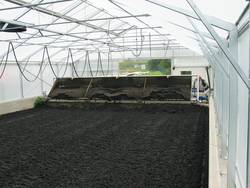
- tipping the SchlammFIT® gutter
The automatic filling process takes about 1-2 hours.
Afterwards the sewage sludge stays in the “filter box” until the next day.
During this time water flows out of the sludge continuously.
After 20-22 hours dwell time the dry matter content has risen to approximately 12-15%.
Now the sewage sludge is dumped over the whole hall width.
Spreading and drying
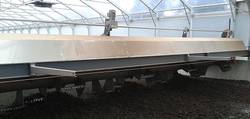
- Distribution of the sewage sludge
The sewage sludge, which is spread over the width of the hall, is now distributed evenly and lengthwise by the rotation drum which works at the entire width of the hall.
The further drying takes place with the SolarTiger® technology trough the power of the sun.
The final product
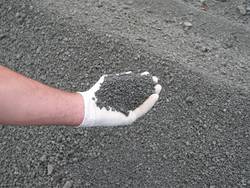
- sewage sludge - dry granule
With the help of the natural sun radiation the rest of the water is evaporated from the sludge.
This is how the sewage sludge dries and at the end of the drying hall it can be collected and stored with a solid content of about 80 %.
So the volume of the sewage sludge is reduced by up to 96 %. From 1,000 m³ liquid sewage sludge only 35 tons dry pellets remain for utilisation.


